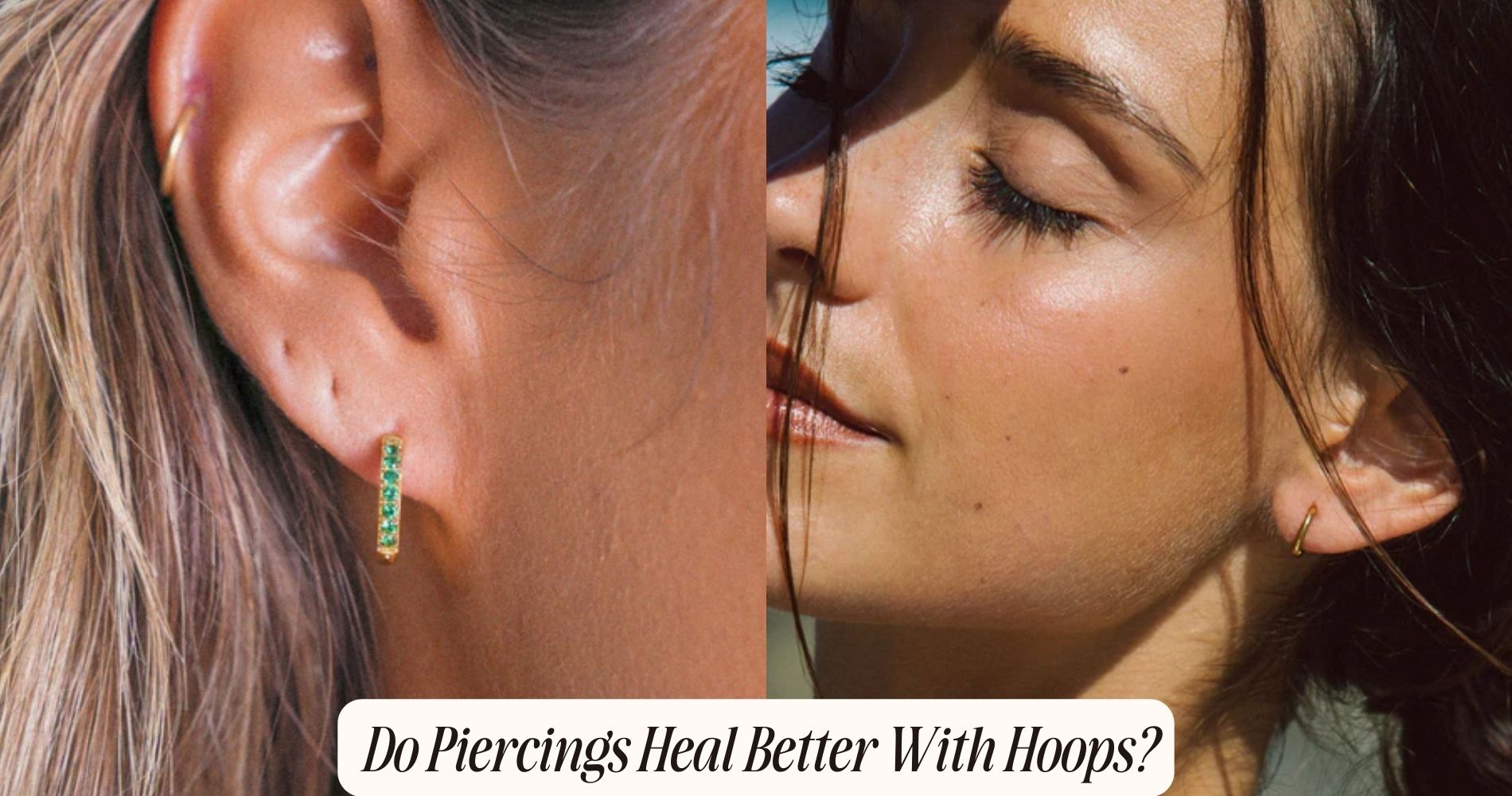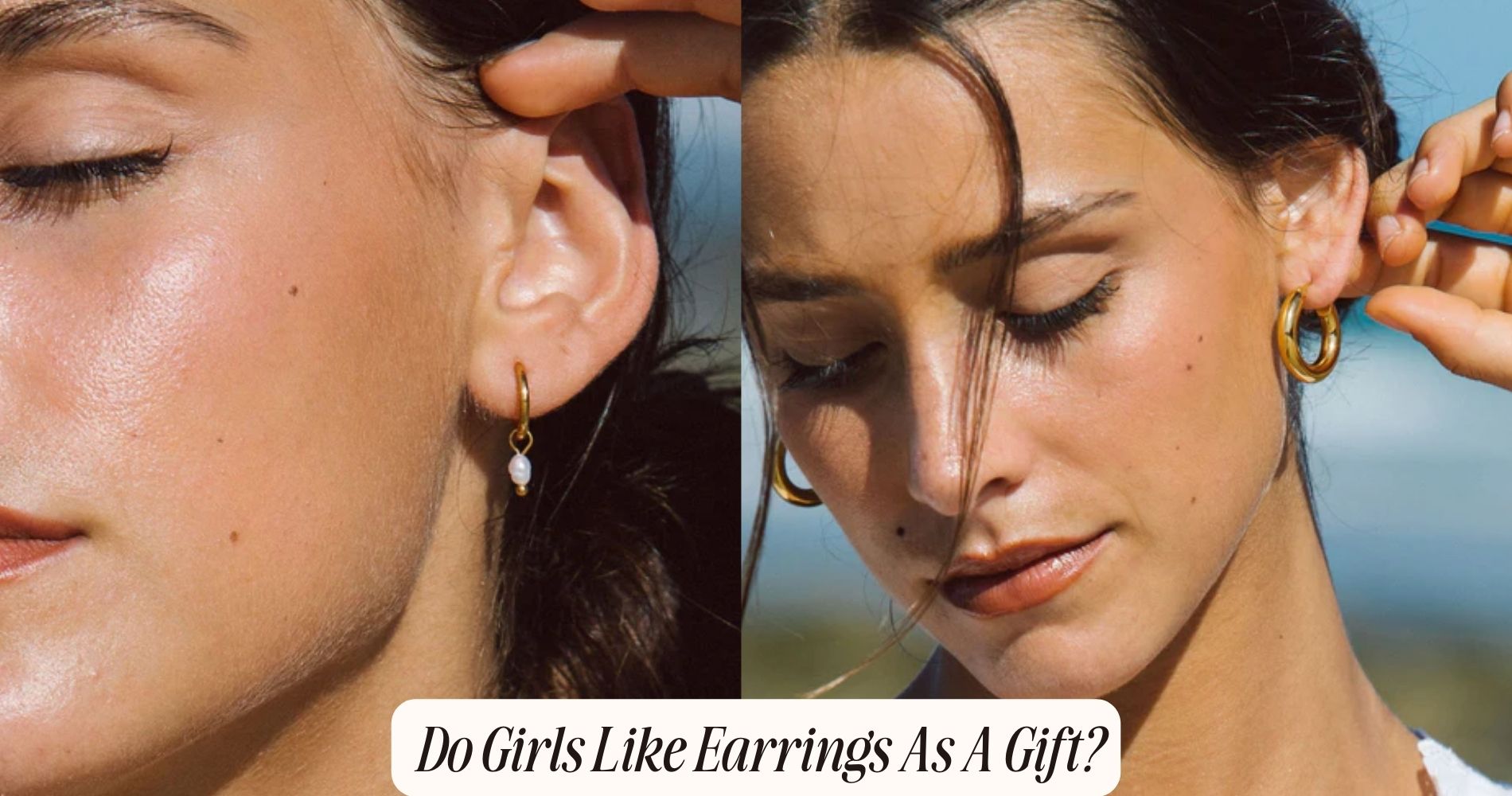
Do Piercings Heal Better With Hoops?
Healing Process Overview
During the initial healing phase, your body initiates an inflammatory response to a new piercing. This response involves increased blood flow, essential for delivering nutrients and immune cells to the site.
The healing process can be divided into three primary stages: inflammatory, proliferative, and maturation. Each stage has unique characteristics that affect how you should manage your aftercare routines.
In the inflammatory stage, expect localized swelling, redness, and possible discharge. Proper aftercare is important here; cleanse the area with a saline solution twice daily to prevent infection. Avoid touching the piercing with unwashed hands.
Next, the proliferative stage involves tissue regeneration. New cells form to replace damaged ones, and a protective layer, or scab, might develop. Continue your aftercare routines, ensuring the area remains clean and dry.
Hoops Vs. Studs
When weighing the choice between hoops and studs for initial piercings, you'll need to take into account healing time differences and the potential for movement and irritation.
Hoops may allow for more movement, possibly increasing the risk of irritation and prolonged healing.
Conversely, studs often provide more stability, which can facilitate a smoother and quicker healing process.
Healing Time Differences
Healing times for piercings can vary greatly between using hoops and studs, with each type presenting distinct advantages and challenges. Studs are generally recommended for initial piercings due to their importance and reduced movement, which can facilitate faster healing. Conversely, hoops, while aesthetically pleasing, have a greater propensity for movement, potentially prolonging the healing process.
The piercing location greatly influences the healing duration. For instance, cartilage piercings, such as those on the helix, may experience extended healing times with hoops due to the increased likelihood of trauma and irritation. In contrast, earlobe piercings might tolerate hoops better, though studs still tend to expedite healing.
Jewelry material is another essential factor. Hypoallergenic materials like surgical stainless steel or titanium are best for minimizing adverse reactions and promoting faster healing. Hoops made from these materials can mitigate some of the healing delays associated with their design, but studs still generally outperform them when it comes to healing efficiency.
Movement and Irritation
Hoops, due to their increased mobility, often exacerbate irritation and prolong the healing period in comparison to the more stable studs. The continuous movement of hoops can disrupt the epithelialization process, causing friction that irritates the piercing site. This irritation can lead to inflammation and an increased risk of infection, which are key factors in delayed healing.
Studs, on the other hand, provide a more secure and stable environment, minimizing movement and thereby reducing the likelihood of irritation. This stability is essential for the formation of healthy granulation tissue, which precedes scar tissue development. When the piercing site is less irritated, there's a lower risk of abnormal scar tissue formation, including hypertrophic scars and keloids.
Keloid formation is a significant concern in body piercings. Hoops can contribute to this by constantly moving and irritating the wound, which can trigger an overproduction of collagen. This excessive collagen can result in keloid scars that aren't only cosmetically concerning but also uncomfortable and sometimes painful.
Benefits of Hoops
Frequently, utilizing hoops for piercings can facilitate ideal healing by allowing for better airflow and reduced irritation. Hoops, due to their circular design, provide an open structure that minimizes pressure on the piercing site, promoting the best tissue repair. This design guarantees that airflow around the pierced area is maximized, decreasing the likelihood of moisture accumulation which can lead to bacterial proliferation and infection.
From an aesthetic appeal perspective, hoops offer versatile styling options that can enhance your overall look. You can choose from various sizes, materials, and designs, allowing for a personalized touch that aligns with your fashion preferences. This flexibility not only adds to the visual attractiveness of your piercing but also provides practical benefits in the healing process.
Furthermore, hoops are less likely to embed into the skin compared to studs, which can often cause localized pressure and delayed healing. By reducing direct contact and friction with the healing tissue, hoops diminish the potential for irritation and inflammation. Additionally, the ease of cleaning around a hoop compared to a stud ensures that you can maintain better hygiene, thereby minimizing the risk of complications during the healing phase.
Risks of Hoops
Despite their benefits, it's important to recognize that hoops can present certain risks during the piercing healing process. One primary concern is the increased likelihood of irritation and trauma. Hoops, due to their shape, can easily get caught on clothing or hair, causing mechanical trauma to the piercing site. This can jeopardize the healing process and lead to prolonged inflammation or even infection.
Pain management is another critical aspect. Hoops can exert uneven pressure on the piercing, potentially causing discomfort or pain. This may require you to employ more rigorous pain management strategies, such as topical anesthetics or anti-inflammatory medications, to mitigate discomfort.
The jewelry material is also a significant factor. Hoops made from suboptimal materials, such as nickel, can provoke allergic reactions or dermatitis. It's crucial to select hypoallergenic materials like surgical stainless steel, titanium, or niobium to minimize these risks. Ensuring the jewelry material meets medical-grade standards can greatly reduce the incidence of adverse reactions.
Benefits of Studs
Choosing studs during the initial healing phase of a piercing can greatly reduce the risk of mechanical trauma and irritation. Studs typically remain stationary, minimizing movement that could exacerbate tissue damage or introduce pathogens. This stabilization fosters a more conducive environment for epithelialization, the critical first step in wound healing.
When it comes to material choice, studs crafted from hypoallergenic metals like surgical stainless steel, titanium, or niobium are preferable. These materials exhibit low reactivity, reducing the likelihood of allergic contact dermatitis and other hypersensitivity reactions. Consequently, selecting the appropriate material can substantially enhance the healing process.
The aesthetic appeal of studs shouldn't be underestimated. Studs offer a subtle, less intrusive appearance, which can be particularly beneficial in professional or conservative settings. Their discreet nature minimizes the risk of snagging on clothing or other objects, further preventing mechanical trauma.
Moreover, studs are easier to clean and maintain, a critical factor in preventing infection. Their simple design allows for more effective antiseptic application, ensuring that the piercing site remains free from microbial colonization.
Risks of Studs
While studs offer numerous benefits, they aren't without their risks, including potential complications such as hypertrophic scarring and keloid formation. Hypertrophic scars are raised, red scars that form within the boundary of the original wound, whereas keloids extend beyond this boundary, often becoming larger over time. Both can cause discomfort and necessitate medical intervention.
You should also be aware of metal allergies, which can manifest as localized dermatitis, characterized by redness, itching, and swelling. This is particularly concerning if the stud is made from nickel or other common allergens. Opting for hypoallergenic materials like surgical steel or titanium can mitigate this risk.
Pressure sores are another potential complication. Studs can exert continuous pressure on the pierced area, especially if the post is too tight or the backing isn't adequately adjusted. This pressure can lead to tissue necrosis and delayed healing, complicating the recovery process.
Infections are also a significant risk, often exacerbated by improper aftercare or the introduction of bacteria during the piercing process. Signs of infection include increased pain, swelling, and discharge. Prompt treatment with antibiotics is essential to prevent further complications.
Aftercare Tips
Adhering to meticulous aftercare protocols is essential for minimizing the risk of infection and ensuring ideal healing of piercings with hoops. Implement a rigorous cleaning routine to maintain the piercing site's hygiene. Clean the area twice daily with a sterile saline solution or an antiseptic specifically formulated for piercings. Use cotton swabs or gauze pads to gently apply the solution, ensuring that all crusted material and debris are removed.
Aftercare products like saline solutions are paramount. Avoid using alcohol, hydrogen peroxide, or ointments as they can irritate the piercing, slow healing, and potentially cause adverse reactions. Always wash your hands thoroughly before touching or cleaning your piercing to prevent introducing bacteria.
Additionally, minimize trauma by avoiding unnecessary movement of the hoop. Refrain from rotating or twisting the jewelry, as this can cause irritation and delay the healing process. Avoid submerging your piercing in bodies of water such as pools, hot tubs, and lakes, which can harbor bacteria.
Monitor your piercing for signs of infection, such as excessive redness, swelling, or discharge. If these symptoms occur, consult a healthcare professional promptly.
Following these evidence-based guidelines will greatly enhance your piercing's healing trajectory.
Personal Preferences
Choosing the right type of hoop for your piercing involves considering material, size, and personal aesthetic preferences to maximize healing and comfort. High-quality materials such as surgical steel, titanium, or 14k gold reduce the risk of allergic reactions and infections. Size is important; a hoop that's too tight can cause pressure and impede healing, while one that's too large may snag on clothing or hair, leading to irritation.
Your personal aesthetic preferences also play a significant role. Cultural significance can influence your choice; for instance, certain cultures attribute specific meanings to hoop styles or materials. Additionally, current fashion trends might sway your decision, as some designs can be more socially accepted or admired.
Understanding your personal comfort and the importance of cultural and fashion considerations allows for a more informed choice. Wearing a hoop that aligns with your style and cultural background can enhance psychological well-being, promoting a positive self-image. Make an evidence-based decision that balances personal preference with ideal healing conditions.
Tailoring your choice of hoop to both medical advice and personal taste ensures a smoother healing process and a more satisfying piercing experience.
Conclusion
Ultimately, the choice between hoops and studs for piercings depends on individual healing responses and preferences. Clinical evidence suggests hoops may offer benefits like reduced pressure on the piercing site, but they also carry higher risks of snagging and irritation.
Studs provide stability, minimizing movement and potential trauma. Consult a healthcare professional to determine the best option for your specific anatomical and healing needs, and adhere to recommended aftercare protocols for best outcomes.























Leave a comment
This site is protected by hCaptcha and the hCaptcha Privacy Policy and Terms of Service apply.